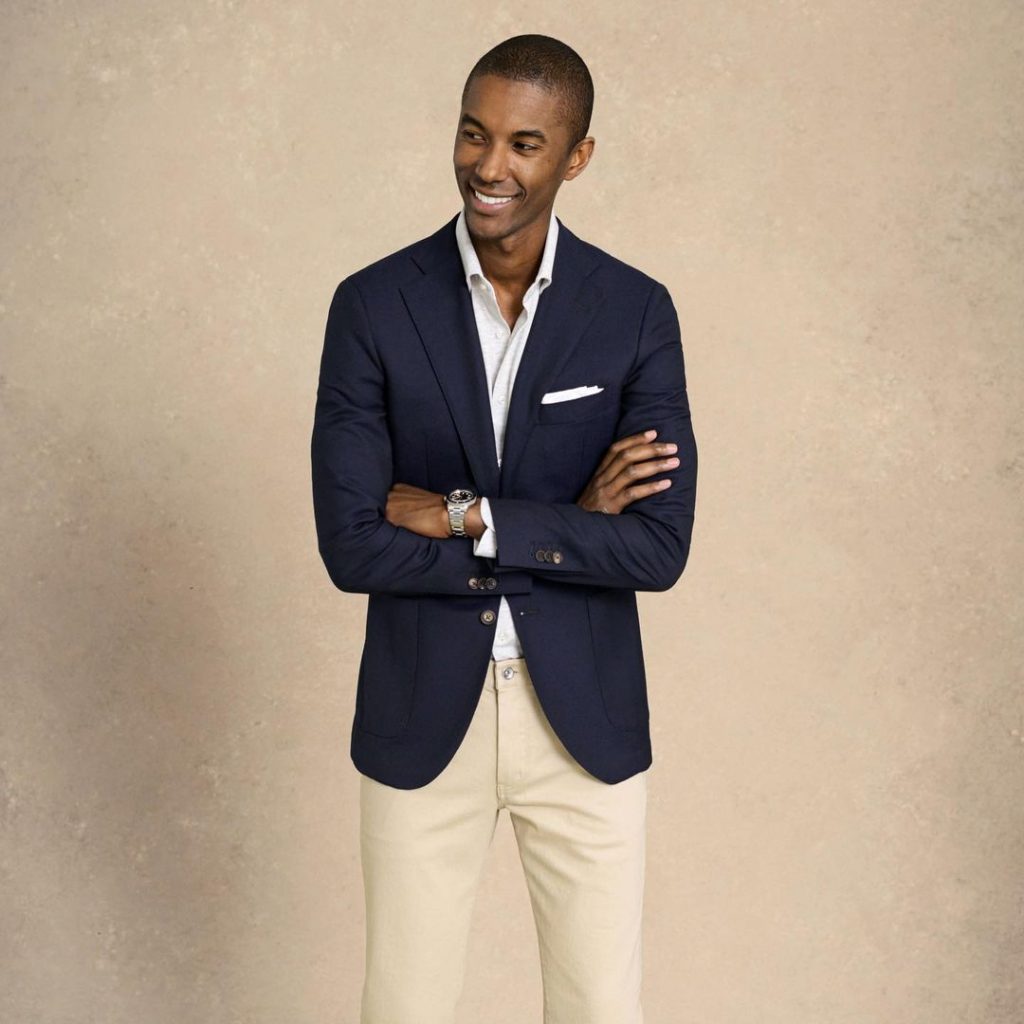
Spring is in the air, and the weather is about to get warmer. This week, many of our sponsors have new things in store for the coming season. Since we like to give them a shoutout twice a month to thank them for their support, we thought we’d run down some of these latest happenings.
Proper Cloth’s new spring collection includes tailored trousers and sport coats made from breathable fabrics such as linen blends and lightweight wools. As a rule of thumb, you want to wear lighter to mid-shades for trousers, as they naturally complement dark jackets. Proper Cloth has some in pearl gray wool-silk-linen blends, beige Supima stretch cotton, and tan Irish linens. The leg line tends to be a little slimmer but still on the modern side of classic. They also come with details such as side-tabs and an extended button-tab closure, the second of which used to be a detail in Italian bespoke tailoring but has since seeped into ready-to-wear.
For sport coats, you can’t get more classic than navy. Navy sport coats typically come in one of two materials — hopsack or serge. Proper Cloth has navy sport coats this season made from Italian hopsack, and being a plain weave, they’re more breathable than the twill-woven serge. Their jackets typically come with casualizing details, such as patched hip pockets, making them easier to dress down. Those looking for their second or third summer sport coat will want to check out the mocha-colored stretch wool blend. It has a solid color but subtle texture, making it wear something like a summer version of your favorite brown tweeds.
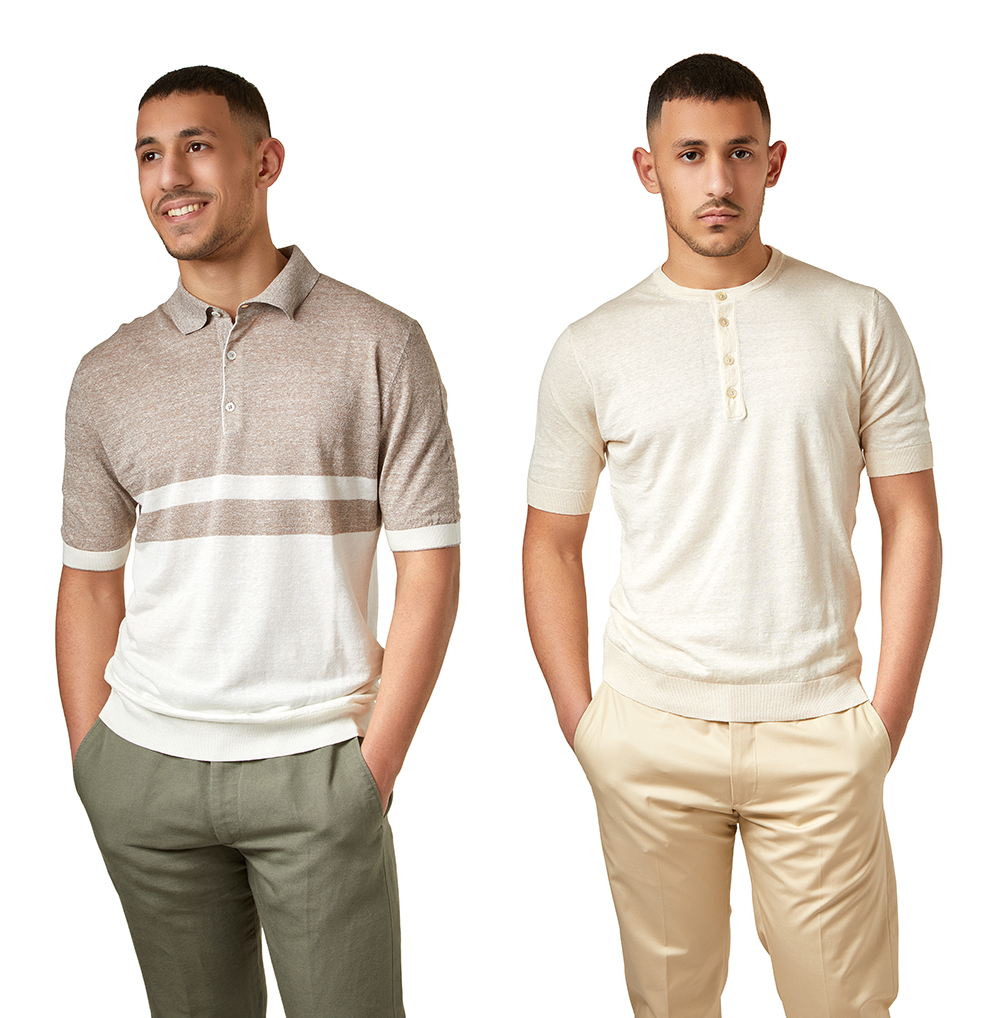
Mauro Farinelli gets very excited when he can talk about how his clothes are made. He founded Wolf vs. Goat about ten years ago, back when there was still a middle-tier in menswear that offered high-value between cost and quality construction. Yet, Farinelli is not a natural marketer, instead primarily relying on word-of-mouth and the enthusiasm of his customer base. However, get him to talk about how his clothes are constructed, and he lights up. Farinelli spends all his time at factories, figuring out specs, and working with producers to get the right fabrics and details. His Rewards Program allows customers to buy things at 50% off — for a lifetime — which only strengthens their value proposition.
This week, Farinelli is in Italy (again) and working with factories. He just received a new shipment of linen henleys, wool-silk blend long-sleeve polos, and bouclé cotton crewneck sweaters. “All of these knits are fully fashioned, which means they don’t have any side-seams,” he explains. “That makes them more comfortable and durable, as there are no seams that can break. Additionally, we fully made these in Italy.”
“Fully made in Italy” is a necessary clarifier. Many clothes that bare the “made in Italy” label are produced offshore and then sent to Italy for superficial finishing so that brands can slap on a country of origin label for marketing purposes. Wolf vs. Goat’s knits are not only made in Italy, but they also use Italian yarns sourced from reputable mills such as Filmar. These wool-silk and cotton-linen yarns are luxuriously soft and give the garments a unique hand.
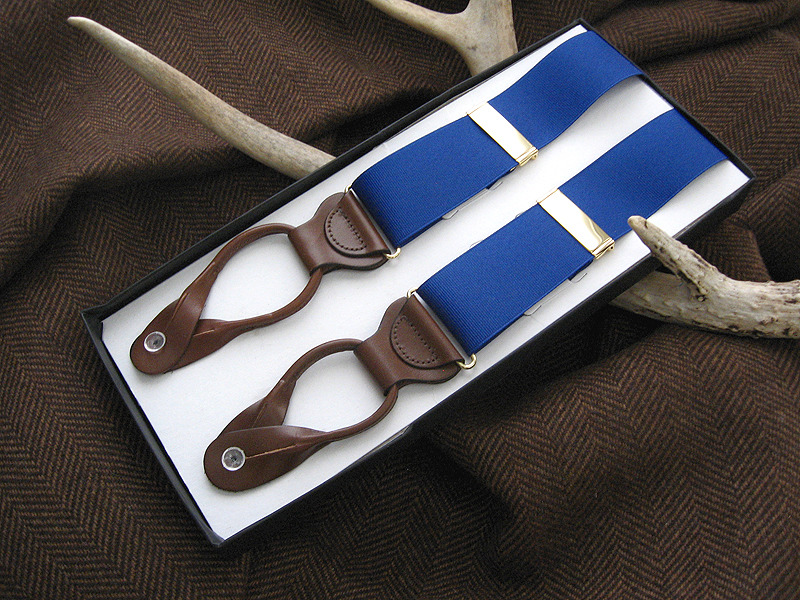
Over the last thirty years, suspenders have gone much in the way of hats. Once common in men’s wardrobes, they’ve become something of a relic of the past. But why might you want to wear suspenders? For one, they’re more comfortable than organ-squeezing tourniquets. Since your waist expands when you sit and return to its smaller circumference when you stand, belts are only comfortable in one of these positions. Suspenders, on the other hand, allow you to have a little extra room at the waistband to accommodate these changes. Plus, they’re better at holding up your pants. Belted trousers tend to slip down throughout the day, which requires you to adjust them continually. You can set the desired length with suspenders, put them on, and never bother with them again.
Chipp Neckwear has the most affordable ones around, at least if you’re looking for something well-made and produced in the USA. The price is $45.50, which is lower than their competitors — much like the price of their grenadine ties. They offer 20 solid colors and three stripes, the choice of black or brown leather kips, as well as gold or silver-colored adjusters.
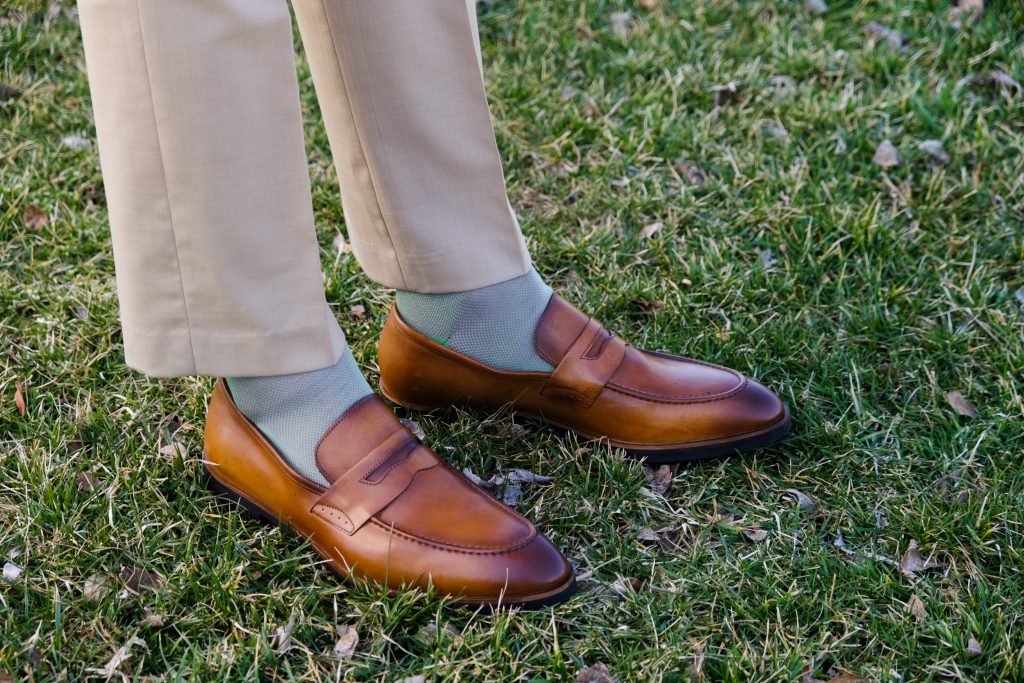
Dapper Classics’ socks are made at a third-generation, family-owned mill in North Carolina, produced from exceptional yarns, and feature hand-linked toes for comfort. They compare well to top-end European brands such as Marcoliani and Bresciani but cost about half the price simply because they don’t have to pass import costs to customers (they are, after all, made in the USA).
This week, they put up their new spring collection, which is full of interesting but tasteful options. The grass-green nailhead socks, pictured above, can be worn with lighter colored trousers in beige or pearl gray. Coffee brown tartan socks would be great with brown penny loafers and tan chinos (they also have a vague autumnal vibe that would suit brown cords in the fall). And yes, the navy-and-coral lobster socks are a little cheeky but fun for weekend outings if you’re not crabby (ha!). If you purchase three pairs of socks at full price this month, Dapper Classics will throw in a pair of slate blue houndstooth socks, which will pick up the blue in your oxford-cloth button-downs.
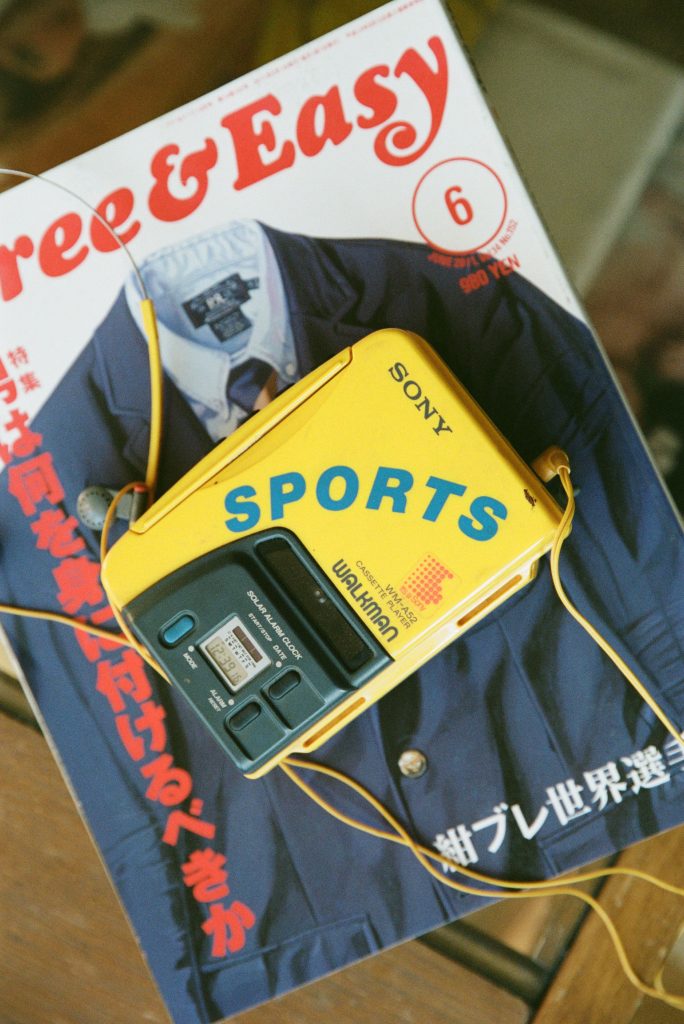
Rowing Blazers just put up a collection of vintage clothing and accessories curated by its founder Jack Carlson. Like the brand itself, it reflects Carlson’s eclectic interests in archaeology, Oxbridge style, streetwear, and more, and includes pieces from his personal collection amassed over years of travel and discovery. Carlson, who earned a doctorate in archaeology from Brasenose College, Oxford, explains: “Archaeology isn’t just digging in the dirt; it’s the study of material culture, which includes vintage clothes. And Rowing Blazers is as much about history as anything else. Much of what we do is the result of tireless research on esoteric sporting traditions, the anthropology of clothes, and vintage pieces we love.”
The collection ranges from the rare and obscure to the kitschy and quirky, consisting of what Carlson calls “diverse pieces that inspire and inform the world of Rowing Blazers.” At Rowing Blazers’ site now, you can find items related to Carlson’s time at both Georgetown and Oxford; rare pieces from Oakley, FILA, Starter, Long Gone, and Nike; various rugby and soccer jerseys, graphic T-shirts, and nylon and corduroy caps; out-of-print issues of Japanese fashion magazines; and iconic books, posters, and accessories satirizing “preppies” and their associated lifestyles. Longtime Put This On readers will probably be interested in the issues of Free & Easy. This now-defunct Japanese menswear magazine focuses on classic American style, workwear, and something the editors affectionately called “dad style.”
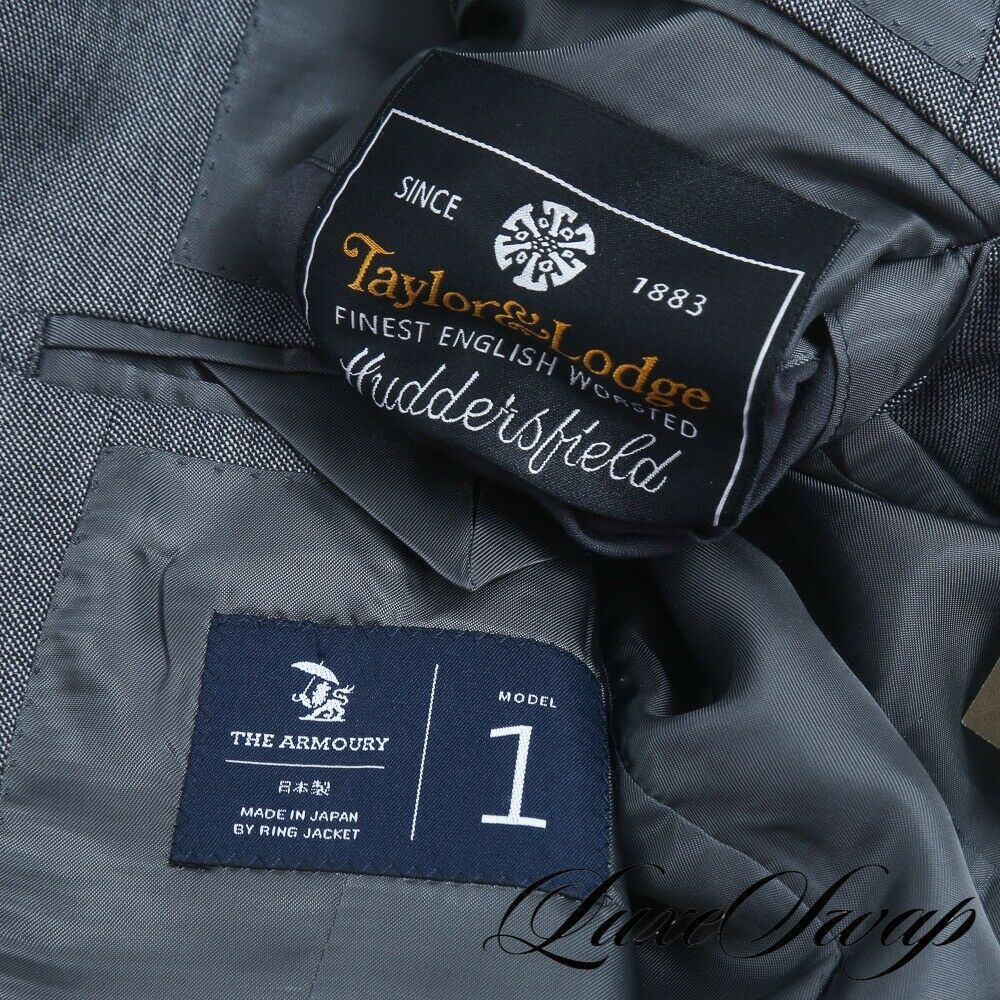
When Mark Cho co-founded The Armoury over ten years ago, he said he didn’t want to hold seasonal sales. But every store has to figure out what to do with unsold stock. So once every five years or so, the company holds sample sales in either New York City or Hong Kong, their home bases, open to locales who can make it to these blowout events.
So when The Armoury held their most recent sample sale a few months ago, our friend and sponsor Matthew at LuxeSwap went all in. He bought hundreds of items, ranging from Carmina shoes to Orazio Luciano tailoring to Coherence outerwear. And, of course, he picked up a bunch of Armoury’s house-line footwear and tailoring. The Armoury’s in-house tailoring, which is made by Ring Jacket in Japan, has become something of a cult favorite for guys obsessive about clothes. The Model 3 is a fully canvassed jacket with no padding across the shoulders, so it wears naturally and comfortably. Yet, through the use of canvas and smart cutting, it also has a slightly extended shoulder line and fuller chest, giving people a more flattering v-shaped figure.
Even at full retail, The Armoury’s prices are an excellent value (after all, the suits are made in Japan, where wages are expensive). But at LuxeSwap, you can now find hundreds of auctions starting at $9.99. Granted, these auctions probably won’t end at $9.99, but they will end at a fraction of the retail price. This can be an excellent way for people to score some great deals, especially if they can’t make it to The Armoury’s rare sample sales. Matthew tells us that he’s listing new Armoury items every week for the next six or seven weeks, so check back often.







